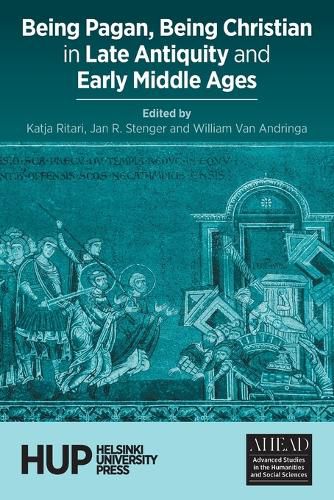Readings Newsletter
Become a Readings Member to make your shopping experience even easier.
Sign in or sign up for free!
You’re not far away from qualifying for FREE standard shipping within Australia
You’ve qualified for FREE standard shipping within Australia
The cart is loading…






This title is printed to order. This book may have been self-published. If so, we cannot guarantee the quality of the content. In the main most books will have gone through the editing process however some may not. We therefore suggest that you be aware of this before ordering this book. If in doubt check either the author or publisher’s details as we are unable to accept any returns unless they are faulty. Please contact us if you have any questions.
What does it mean to identify oneself as pagan or Christian in Late Antiquity and the Early Middle Ages? How are religious identities constructed, negotiated, and represented in oral and written discourse? How is identity performed in rituals, how is it visible in material remains?
Antiquity and the Middle Ages are usually regarded as two separate fields of scholarship. However, the period between the fourth and tenth centuries remains a time of transformations in which the process of religious change and identity building reached beyond the chronological boundary and the Roman, the Christian and 'the barbarian' traditions were merged in multiple ways.
Being Pagan, Being Christian in Late Antiquity and Early Middle Ages brings together researchers from various fields, including archaeology, history, classical studies, and theology, to enhance discussion of this period of change as one continuum across the artificial borders of the different scholarly disciplines. With new archaeological data and contributions from scholars specializing on both textual and material remains, these different fields of study shed light on how religious identities of the people of the past are defined and identified.
The contributions reassess the interplay of diversity and homogenising tendencies in a shifting religious landscape. Beyond the diversity of traditions, this book highlights the growing capacity of Christianity to hold together, under its control, the different dimensions - identity, cultural, ethical and emotional - of individual and collective religious experience.
$9.00 standard shipping within Australia
FREE standard shipping within Australia for orders over $100.00
Express & International shipping calculated at checkout
This title is printed to order. This book may have been self-published. If so, we cannot guarantee the quality of the content. In the main most books will have gone through the editing process however some may not. We therefore suggest that you be aware of this before ordering this book. If in doubt check either the author or publisher’s details as we are unable to accept any returns unless they are faulty. Please contact us if you have any questions.
What does it mean to identify oneself as pagan or Christian in Late Antiquity and the Early Middle Ages? How are religious identities constructed, negotiated, and represented in oral and written discourse? How is identity performed in rituals, how is it visible in material remains?
Antiquity and the Middle Ages are usually regarded as two separate fields of scholarship. However, the period between the fourth and tenth centuries remains a time of transformations in which the process of religious change and identity building reached beyond the chronological boundary and the Roman, the Christian and 'the barbarian' traditions were merged in multiple ways.
Being Pagan, Being Christian in Late Antiquity and Early Middle Ages brings together researchers from various fields, including archaeology, history, classical studies, and theology, to enhance discussion of this period of change as one continuum across the artificial borders of the different scholarly disciplines. With new archaeological data and contributions from scholars specializing on both textual and material remains, these different fields of study shed light on how religious identities of the people of the past are defined and identified.
The contributions reassess the interplay of diversity and homogenising tendencies in a shifting religious landscape. Beyond the diversity of traditions, this book highlights the growing capacity of Christianity to hold together, under its control, the different dimensions - identity, cultural, ethical and emotional - of individual and collective religious experience.